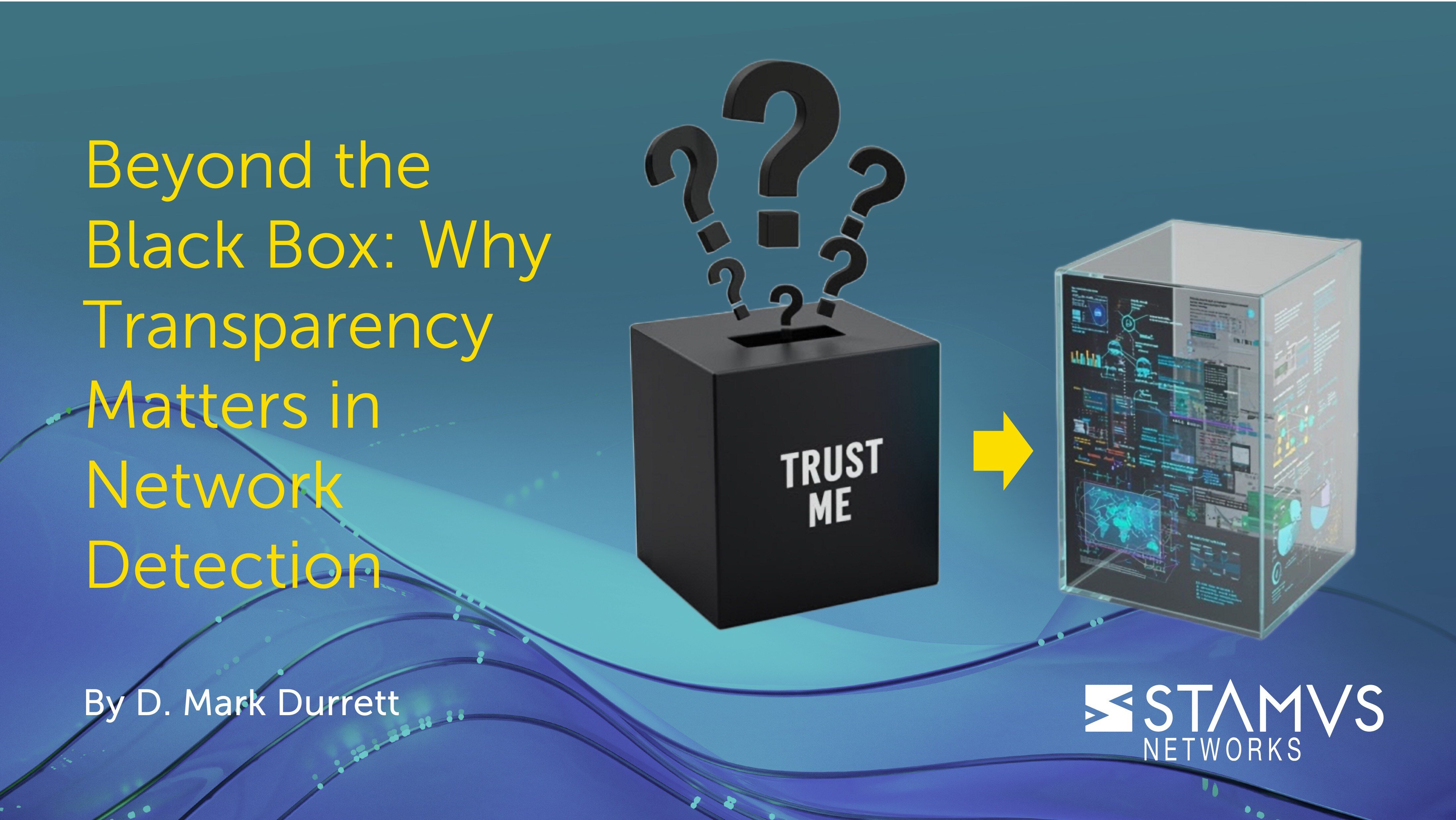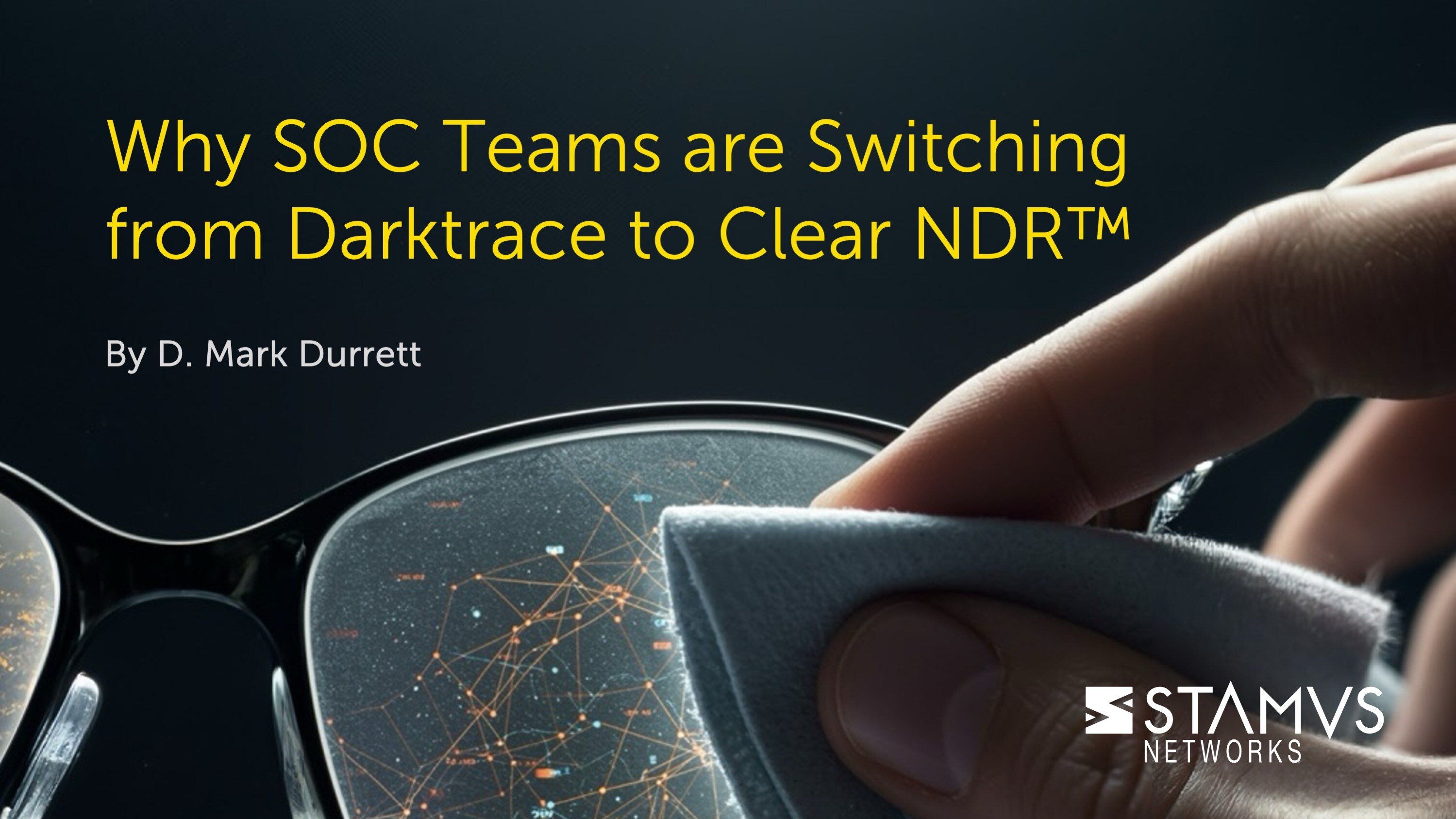Network detection and response (NDR) is becoming an increasingly popular topic in cyber security. As NDR vendors begin to gain recognition for the effectiveness of their solutions, more and more cyber security professionals are looking into NDR products and seeking to understand how their organization could benefit. But for those previously unfamiliar with NDR, the first step is to learn the basics.
What is the meaning of NDR?
The meaning of NDR is “network detection and response”. In the simplest terms, NDR is a cyber security solution that monitors network traffic data to identify and respond to potential cyber threats. For an organization, this means reducing their risk and protecting their digital assets.
NDR uses advanced detection methods, like artificial intelligence and machine learning, to detect both known and unknown threats. A known threat is any malicious activity that has been reported and shared through a threat intelligence source. An unknown threat is novel and there is no prior knowledge or documented signature within existing databases. Once a threat has been identified, a network detection and response system will often have tools to automate a response, enabling security teams to mitigate the threat.
Many NDRs will also include additional features for threat hunting, which allows a security practitioner to actively filter through network data to find specific threats, unwanted user behaviors, policy violations, or shadow IT. It is because of its robust set of features that NDR is steadily gaining traction as an effective threat detection and response system.
What is NDR in cyber security?
NDR (network detection and response) in cyber security is a solution that monitors and analyzes network traffic for signs of malicious activity or security threats. Using advanced detection methods, automated incident response, and threat hunting, NDR enables organizations to proactively detect and respond to potential threats to reduce the risk of data breaches or unauthorized access.
For those seeking a more formal definition of NDR, Gartner says this in the “2022 Market Guide for Network Detection and Response”:
“Network detection and response (NDR) products detect abnormal system behaviors by applying behavioral analytics to network traffic data. They continuously analyze raw network packets or traffic metadata between internal networks (east-west) and public networks (north-south). NDR can be delivered as a combination of hardware and software appliances for sensors, and a management and orchestration console in the form of an on-premises software or SaaS.”
NDR represents a logical progression from conventional network security tools such as intrusion detection systems (IDS). In contrast to IDS, NDR offers advanced detection methods, anomaly detection, threat hunting, high-fidelity alerts, and automated response capabilities essential for addressing emerging threats. While some NDR systems may incorporate IDS signature-based threat detection methods, it's important to note that no IDS is capable of delivering the comprehensive functionality provided by NDR.
How does an NDR work?
An NDR works by actively and continuously scanning network traffic. It then uses a variety of detection methods to identify and respond to potential threats in real time, offering a dynamic defense mechanism against cyber attacks. The network is monitored passively with NDR, meaning there is no need to install software on any individual devices like you would with endpoint detection and response (EDR) software.
Once a threat is detected, most NDR systems will automatically categorize and prioritize incidents, enabling security teams to address the most critical issues promptly. Additionally, many NDR solutions include the ability to automate response actions or send notifications to the organization’s security team.
What is the role of NDR?
NDR security tools generally fulfill 4 functions for most organizations:
- 1. Automated Threat Detection - Advanced algorithms and machine learning automatically identify potential threats within network traffic. Continuous monitoring and network data analysis enable NDR solutions to detect anomalous behaviors, malicious patterns, and IOCs in near real-time. This enables security teams to perform the following use-case – incident response.
- 2. Incident Response - By capturing detailed network activity logs and traffic data, NDR empowers security teams to reconstruct the sequence of events, investigate the root cause, and understand the extent of the breach. This enhanced visibility allows for faster response times, enabling organizations to contain and mitigate the impact of security incidents efficiently.
- 3. Proactive Threat Hunting - Security analysts can use advanced search capabilities, behavioral analytics, and threat intelligence to actively explore network data, identify hidden threats, and uncover emerging attack patterns. Proactive threat hunting helps organizations stay ahead of threat actors, detecting and neutralizing threats before they cause harm.
- 4. Remediation - Once a threat is identified, an NDR system can automatically trigger a response action through integrations with other systems like EDR to block suspicious IP addresses, isolate compromised end-user devices, or implement access control policies. These actions help contain the threat, prevent lateral movement, and minimize the impact of a security incident.
The Stamus Security Platform
The Stamus Security Platform (SSP) is the world’s most advanced Suricata-based network detection and response (NDR) system. We combine the very best of machine learning, signature-based, IoC matching, and algorithmic threat detection into a single platform that identifies both known and unknown threats lurking on your network. To learn more about the Stamus Security Platform, view the following resources:
- Stamus Security Platform Data Sheet
- Real World Success Stories: In the Trenches with NDR
- Stamus Security Platform Overview
To be notified of new blog posts and other news, make sure to subscribe to the Stamus Networks blog and the Stamus Spotlight Monthly Newsletter, follow us on Twitter, LinkedIn, and Facebook, or join our Discord.






